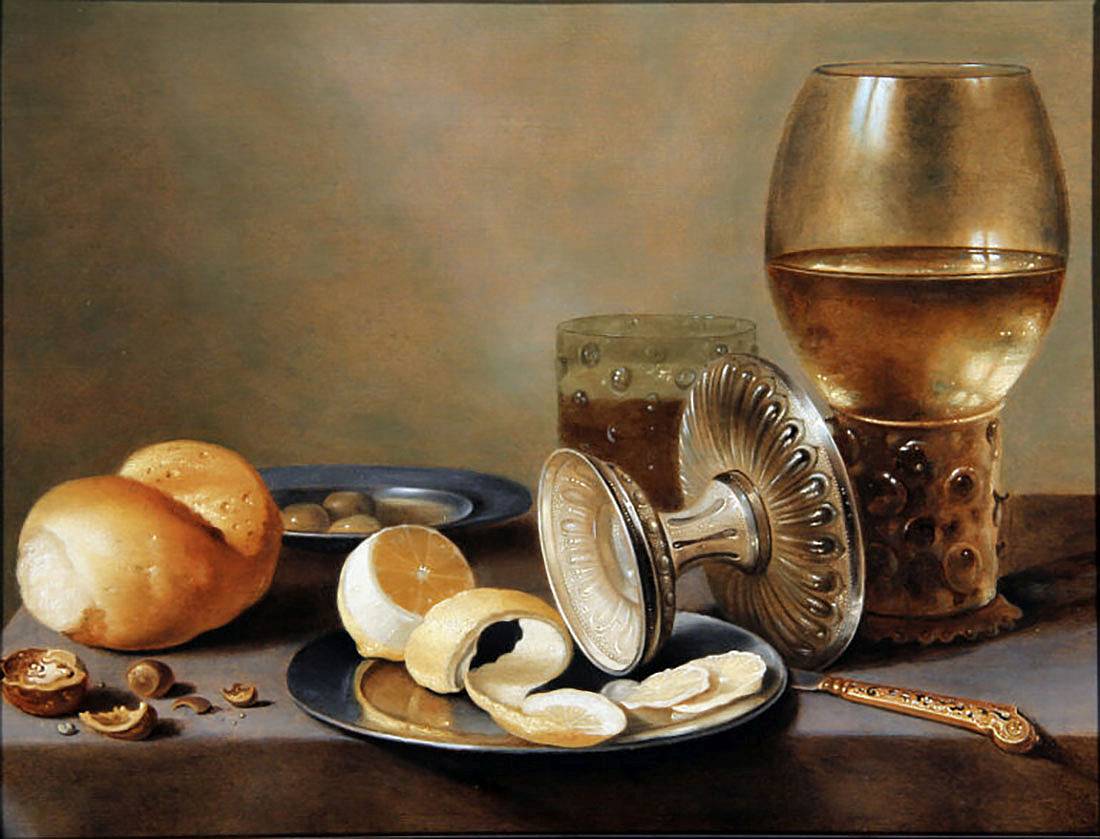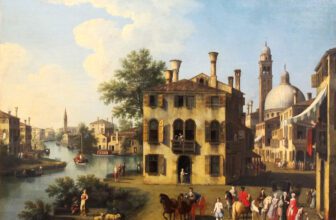
Why Still Life Paintings Are Gaining Popularity Among Collectors
In recent years, the art world has witnessed a fascinating and somewhat unexpected revival: the growing popularity of still life paintings among art collectors. Once considered a traditional or even old-fashioned genre, still life art has emerged as a powerful symbol of sophistication, cultural heritage, and personal expression. From classic oil compositions to modern minimalistic interpretations, these artworks are attracting attention not only in galleries but also in private collections, auctions, and even digital art spaces.
But why exactly are still life paintings making a comeback? What is fueling this renewed interest among collectors worldwide? In this comprehensive guide, we’ll explore the historical roots of still life, its modern resurgence, and the deeper emotional and financial reasons why collectors are turning their gaze toward this timeless genre.
The Enduring Appeal of Still Life: A Historical Perspective
Still life painting has a rich and fascinating history dating back centuries. The genre flourished during the Dutch Golden Age, when artists such as Jan Davidsz. de Heem and Willem Kalf created exquisitely detailed paintings of everyday objects ,flowers, fruit, books, glassware, and more. These works were not just technical marvels; they were deeply symbolic, reflecting ideas of mortality, wealth, spirituality, and the passage of time.
In the 17th century, still life was especially popular in the Netherlands, Spain, and Italy. Wealthy merchants and noble families commissioned these works to display their affluence and taste. In many ways, these paintings served as status symbols ,visual representations of a collector’s refinement.
Throughout the 19th and 20th centuries, the genre evolved further. Artists like Paul Cézanne and Vincent van Gogh brought new emotional depth and bold experimentation to still life painting. The genre became a vehicle for exploring color theory, perspective, and emotion, paving the way for modern and abstract interpretations.
Today, that long lineage continues to resonate. Collectors often find still life paintings appealing because they connect the present to centuries of artistic tradition ,a link between past and present that few other genres offer so powerfully.
Symbolism and Storytelling: Why Still Life Speaks to the Soul
One of the main reasons still life art remains so compelling is its profound ability to tell stories through objects. Unlike portraits or landscapes, still life compositions often rely on subtle symbolism. A vase of wilting flowers might represent the fleeting nature of beauty. A skull might symbolize mortality. A cluster of ripe fruit can suggest abundance and prosperity.
Collectors are drawn to these layered meanings. Owning a still life painting is like owning a riddle ,each object carefully placed to create a narrative that unfolds slowly over time. This timeless storytelling quality adds intellectual and emotional depth to an art collection.
Moreover, modern still life artists often reinterpret these traditional symbols in contemporary ways. A painting of smartphones, takeaway coffee cups, or vintage cameras can carry commentary on modern consumerism, technology, and nostalgia. This blending of old forms with new content makes the genre endlessly adaptable and relevant to current cultural conversations.
A Perfect Blend of Aesthetic Balance and Technical Skill
Another major factor driving the resurgence of still life painting is its undeniable aesthetic appeal. These artworks often embody harmony, precision, and exquisite attention to detail. Whether executed in realistic oil on canvas or bold contemporary mixed media, still life paintings naturally draw the eye and create visual balance in a room.
From a collector’s standpoint, still life paintings also reflect an artist’s technical mastery. The ability to render textures ,glossy fruit skin, soft petals, reflective metal ,demonstrates exceptional control over medium and technique. For serious art enthusiasts, owning a technically accomplished still life painting is both a pleasure and a mark of discernment.
This combination of beauty and craftsmanship makes still life art a safe yet sophisticated investment. It appeals to collectors who value not just emotional resonance but also artistry in its purest form.
The Rise of Interior Design Trends Favoring Still Life Art
One of the most interesting drivers behind the renewed popularity of still life paintings is the influence of contemporary interior design trends. Designers increasingly favor timeless, versatile, and elegant artworks that complement various styles ,from minimalist modern apartments to classic luxury interiors.
Still life paintings are uniquely suited to this. Their often neutral or harmonious color palettes, clear focal points, and structured compositions make them ideal centerpieces for living rooms, dining spaces, offices, and galleries. Unlike some abstract works that can be polarizing, still life art tends to have broad aesthetic appeal, making it a favorite among homeowners and interior decorators alike.
Moreover, high-quality prints and original pieces are being featured in design magazines and luxury home showcases worldwide. As a result, many collectors are discovering the genre through interior design first ,then diving deeper into fine art collecting.
Affordability and Accessibility for New Collectors
For new and aspiring art collectors, affordability plays a crucial role in deciding what to acquire. Historically, still life paintings ,especially works by emerging artists ,have been more accessible in price compared to portraits or large-scale figurative works. This has made the genre a perfect entry point for people looking to build their collections thoughtfully without immediately spending a fortune.
Even among established collectors, still life artworks are often seen as strategic investments. As demand continues to rise, the market for still life paintings ,both traditional and contemporary ,is becoming more competitive. But compared to certain high-demand categories like abstract expressionism or blue-chip contemporary works, there’s still room for discovery and growth.
Additionally, the genre’s timeless appeal means that well-chosen pieces tend to retain or increase in value over time. This makes still life a smart addition to a diversified art collection.
Digital Exposure and Social Media Amplification
Another crucial factor in the resurgence of still life art is its digital presence. In the age of visual media, platforms like Instagram, Pinterest, and TikTok play a major role in shaping trends. Still life paintings, with their strong compositions and photogenic appeal, are highly shareable online.
Artists are increasingly showcasing their works digitally, reaching audiences far beyond traditional galleries. Collectors, too, are discovering new talent through these platforms. A striking image of a still life painting in a well-designed interior can inspire potential buyers instantly.
Additionally, the rise of online art marketplaces such as Artsy and Saatchi Art has made it easier than ever for collectors to browse, purchase, and invest in still life works from artists around the globe. This digital accessibility has played a massive role in the genre’s resurgence.
Emotional Resonance in a Fast-Paced World
In our hyper-connected, fast-moving society, many people are searching for stillness, mindfulness, and moments of reflection. Still life paintings, by their very nature, embody these values. They capture quiet moments ,objects frozen in time, inviting viewers to pause and contemplate.
This emotional quality resonates strongly with modern collectors. Owning a still life painting is not just about decor or investment; it’s about creating a serene focal point in one’s personal space. Many collectors describe their still life pieces as “anchors” in their homes ,visual reminders to slow down, breathe, and appreciate beauty in the everyday.
A Bridge Between Classicism and Contemporary Art
One of the unique strengths of still life painting is its ability to transcend eras. The genre has deep classical roots but remains incredibly flexible for contemporary interpretation. Modern artists are reimagining still life compositions with bold colors, abstract shapes, unconventional objects, and digital tools.
This ability to evolve makes the genre appealing to a wide spectrum of collectors. Traditionalists appreciate works that echo the old masters, while contemporary collectors enjoy fresh, innovative takes. Galleries are increasingly showcasing exhibitions that place historical still life works alongside modern reinterpretations, highlighting the genre’s adaptability and relevance.
Investment Potential and Market Growth
The art market is constantly shifting, and savvy collectors are always on the lookout for genres with strong growth potential. Still life paintings fit this profile well. Over the past decade, auction results and gallery sales have shown steady increases in demand for both historic and contemporary still life works.
For example, classical still life paintings from the Dutch Golden Age continue to command high prices at major auction houses such as Christie’s and Sotheby’s. Meanwhile, contemporary still life pieces by rising artists often sell quickly in both physical and online galleries.
Because the genre appeals to a broad audience ,interior designers, traditional collectors, new buyers, and investors ,its market remains stable and promising. For many collectors, purchasing still life paintings is a strategic decision blending passion with long-term value.
The Rise of Personalization and Commissioned Still Life Art
Another interesting trend fueling the genre’s growth is the rise of personalized, commissioned still life paintings. Many collectors now collaborate directly with artists to create bespoke pieces that feature meaningful objects ,heirlooms, personal mementos, favorite flowers, or symbolic items.
This trend taps into the emotional core of art collecting. A commissioned still life is not just a beautiful painting; it’s a personal narrative. Such artworks hold deep sentimental value, making them treasured possessions that are rarely resold. This personal connection has increased the genre’s desirability among discerning collectors.
The Role of Art Education and Cultural Awareness
Art education has also played a part in reviving interest in still life. Many art schools and workshops teach still life as a foundational exercise because it hones observation skills, lighting techniques, and composition mastery. This widespread exposure helps artists and art enthusiasts develop an appreciation for the genre’s complexity.
Cultural institutions and museums, such as The Metropolitan Museum of Art and National Gallery, London, frequently feature still life works in their exhibitions, connecting them with broader historical and cultural narratives. This increased visibility fosters respect and curiosity among collectors, making still life an attractive genre to own.
Still Life as a Reflection of Personal Taste and Identity
For collectors, the art they choose is often a reflection of who they are. Still life paintings offer unique opportunities for personal expression. A collector might choose a painting featuring books, instruments, or culinary elements that reflect their passions and interests. Someone else might prefer minimal, modern still lifes that align with a contemporary lifestyle.
Unlike more narrative or figurative genres, still life art allows for open interpretation. It encourages viewers to project their own stories and emotions onto the work, creating a personal bond. This flexibility makes still life paintings incredibly versatile and desirable in diverse collections.
Sustainability and the “Slow Art” Movement
Another cultural force driving the resurgence of still life is the growing appreciation for sustainability and the “slow living” ethos. In contrast to fast fashion and disposable consumerism, art collectors increasingly value objects that endure ,works with timeless appeal that are meant to last generations.
Still life paintings fit perfectly into this mindset. Their subject matter often celebrates the simple beauty of everyday objects ,flowers, fruit, tableware, and natural elements. They encourage mindfulness and appreciation for what we already have, resonating deeply with environmentally conscious and philosophically minded collectors.
Versatility in Mediums and Styles
While traditional oil on canvas remains popular, contemporary still life artists are experimenting with a wide range of mediums and techniques: watercolor, gouache, acrylic, collage, digital art, and even 3D installations. This stylistic diversity makes the genre exciting and relevant to modern audiences.
For collectors, this means more options. Whether they prefer hyperrealism, abstraction, minimalism, or vibrant modern pop art, there’s a still life painting that suits their aesthetic preferences and investment goals. This versatility contributes significantly to the genre’s sustained growth in popularity.
The Intimacy of Scale and Space
Many still life paintings are relatively modest in size compared to grand historical scenes or monumental sculptures. This makes them particularly suitable for private collections and personal spaces. A collector can own several still life pieces without requiring massive display areas.
This intimacy creates a more personal relationship between the viewer and the artwork. In a home or office, a still life painting can become a daily companion ,subtle, elegant, and deeply personal. This accessibility of scale plays a quiet but powerful role in the genre’s renewed popularity.
A Genre That Transcends Cultural Boundaries
Another fascinating aspect of still life painting is its universal language. While some genres may be tied to specific cultural or historical narratives, still life ,at its core ,depicts objects and their relationships to space, light, and time. This makes it accessible and meaningful to audiences around the world, regardless of language or cultural background.
Collectors from Asia, Europe, the Americas, and beyond can all appreciate the elegance of a well-crafted still life. This cross-cultural appeal has helped the genre flourish in an increasingly global art market.
Still Life in the Age of NFTs and Digital Collecting
Interestingly, still life has also found its place in the digital art boom. With the rise of NFTs (non-fungible tokens) and digital collecting, contemporary artists are creating modern still life compositions using 3D modeling, digital painting, and motion graphics.
Digital still life artworks combine classic composition principles with futuristic aesthetics, attracting a new generation of collectors who are as comfortable with cryptocurrency wallets as they are with gallery catalogs. This fusion of tradition and innovation is helping the genre expand beyond traditional boundaries and into emerging markets.
Celebrity Endorsement and Media Exposure
Celebrity influence and media coverage have a measurable impact on art trends. In recent years, high-profile figures ,actors, musicians, and business leaders ,have been showcasing their art collections publicly through interviews and social media. Still life paintings often appear prominently in these collections, reinforcing their image as refined and timeless art pieces.
Auction houses and galleries also highlight these endorsements, further driving demand. As more collectors aspire to own pieces similar to those admired by cultural icons, the popularity of still life continues to climb.
The Joy of Discovering Emerging Artists
While some collectors focus on historical masters, many others are excited by the opportunity to discover and support emerging still life painters. The genre attracts talented artists who use it to hone their craft and develop signature styles. For collectors, this creates opportunities to invest early in artists whose reputations may grow significantly over time.
Galleries, online marketplaces, and art fairs increasingly showcase contemporary still life art, making it easier for collectors to explore fresh talent. This discovery process ,filled with personal connection and potential for future appreciation ,adds another layer of excitement to collecting.
A Timeless Genre Poised for Continued Growth
Still life painting has always held a special place in the history of art. But in the 21st century, it’s experiencing a renaissance like never before. Its blend of aesthetic beauty, symbolic depth, emotional resonance, and investment potential makes it uniquely suited to the evolving tastes of modern collectors.
From traditional oil masterpieces to digital reinterpretations, from modest home collections to international auctions, still life paintings are reclaiming the spotlight. Their ability to adapt, endure, and inspire ensures that this centuries-old genre will continue to thrive well into the future.
Why Collectors Love Still Life
The resurgence of still life paintings is not a passing fad ,it’s a reflection of deep cultural and personal values. These artworks offer a balance of history and modernity, aesthetics and intellect, emotion and investment. They bring serenity to modern spaces, serve as conversation starters, and carry personal meaning for their owners.
Whether you’re a seasoned collector or someone just beginning your art journey, exploring still life painting can be a rewarding experience. It’s a genre that invites you to look closely, think deeply, and connect emotionally with the beauty of everyday objects.
As the art world continues to evolve, still life remains a constant ,a timeless expression of human creativity and appreciation for life’s quiet moments.




